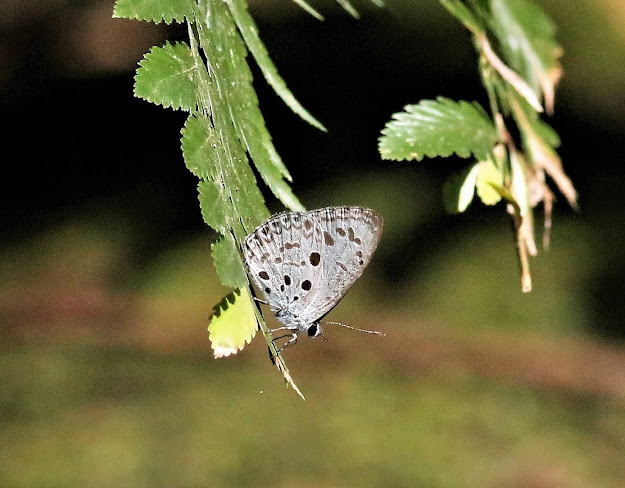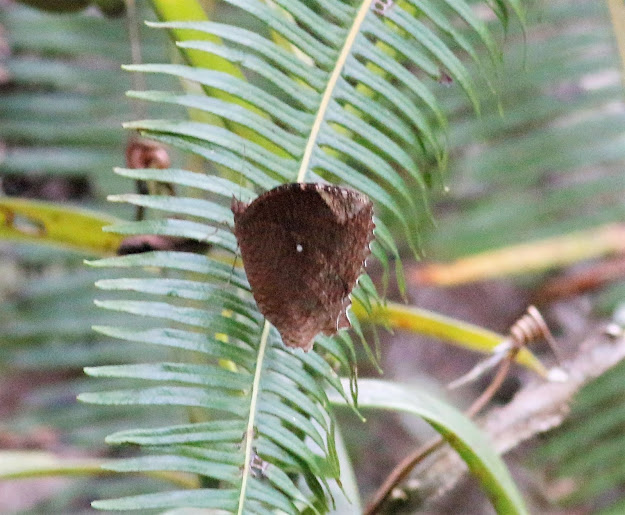Malayan Cruiser (Vindula dejone chersonesia)
 |
| At 4.3 cm, it's quite a large butterfly. |
Malayan Cruiser (Vindula dejone chersonesia)
In most butterflies, their upper wings pattern and colors are more outstanding than their underwings.
Common Grass Yellow (Eurema hecabe)
Very common in neighbourhood gardens.
Stripped Albatross (female)
(Appias libythea)
Another common garden butterfly.
Stripped Albatross (male)
(Appias libythea)
I don't see them pairing like the birds although they are close by.
Eooxylides tharis (Branded Imperial)
Although common, this butterfly seldom venture out in the open.
It will usually stick to the thick bushes along the jungle trails.
Tailed Jay (Graphium agamemnon)
This butterfly can be quite common in your garden.
The only problem with this butterfly is that they seldom stay still and they fly quite fast as well
Common Imperial
It's more common in the jungle trails than in the parks
One of its main features is that its upper tail is longer than the lower tail
Plain Hedge Blue (Celastrina lavendularis)
Another forest butterfly
Puddling on the road
This should be a Common Palmfly (Elymnias hypermnestra) - distinguished by the white costal spot at its hindwing.
Here are some quite rare butterflies which i have encountered recently
Scientific name: Amblypodia narada taooana
Common name: "Blue Leaf Blue"
I had to rely on local butterfly expert i.e Monsieur Liew to identify the above butterfly.
Another uncommon butterfly or rather rare skipper
Darpa striata striata (Striated Angle)
It was seen resting on a wild banana plant leave.
Elbowed Pierrot (Caleta elna elvira)
The above butterfly was identified with the help of friends in the "Butterflies of Peninsular Malaysia" FB group. It is slightly different from 'Straight Pierrot' (Caleta roxus) in that the latter's forewing band is straighter and its black blotches appear darker than the above butterfly.
A Plain Hedge Blue (1.6 cm) puddling together with Elbowed Pierrot (1.7 cm)
The Commander (Moduza procris)
The above photo could have been better if the surface was smoother
Royal Assyrian (Terinos terpander)
Not easy to find a Royal Assyrian with its wings opened like this. Most of the time they are clasped.
Until we meet again - Au Revoir !






















































































